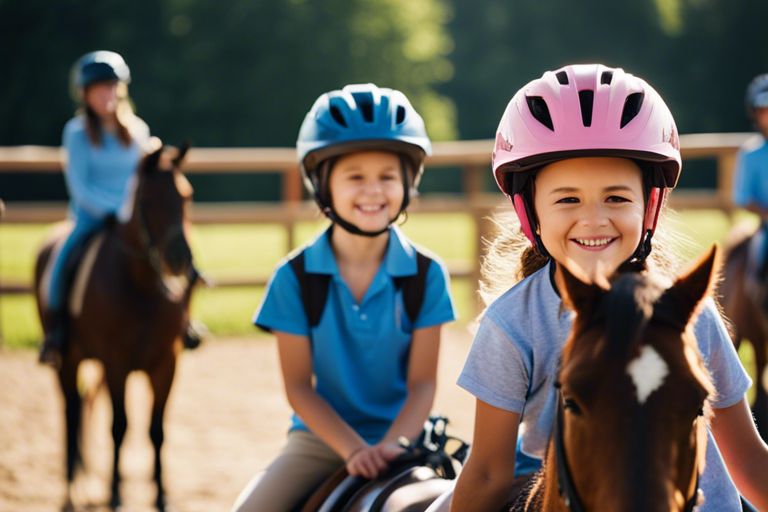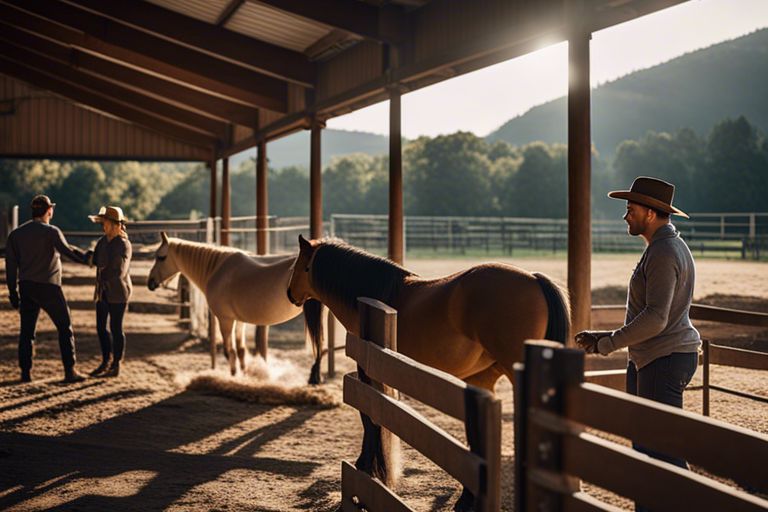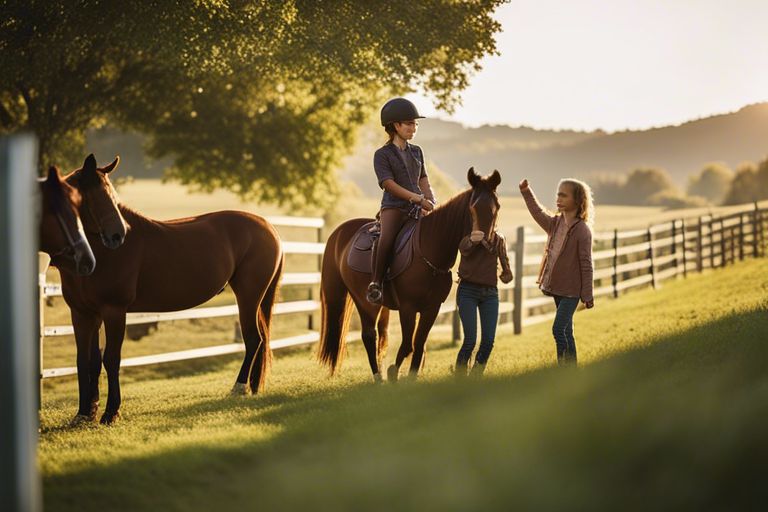There’s no better way to introduce young riders to the joys of horsemanship than by starting your own youth riding program. With the proper planning and safety measures in place, you can nurture a love for horses and teach important life skills to the next generation. Here’s a step-by-step guide to help you kickstart your very own youth riding program.
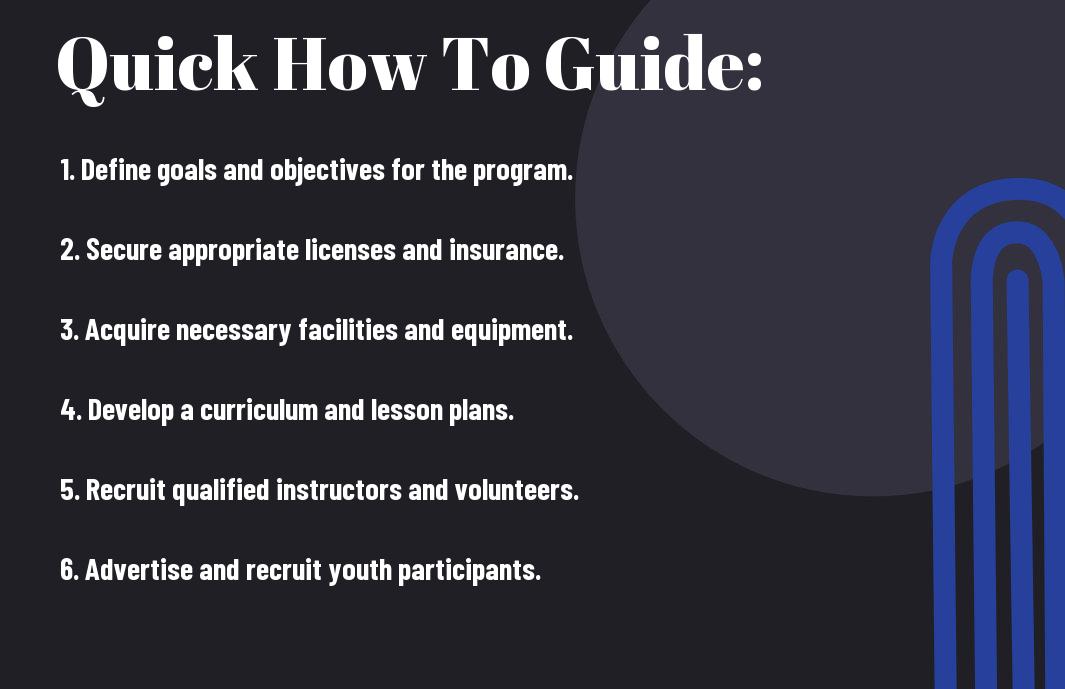
Understanding the Basics of a Youth Riding Program
Defining the Program’s Mission and Goals
As you start a youth riding program, it is necessary to define the program’s mission and goals. The mission statement should outline the purpose of the program and what values it aims to instill in the participants. Your goals should be specific, measurable, achievable, relevant, and time-bound to provide a clear direction for the program.
Identifying the Target Age Group and Skill Level
Grouping participants based on age and skill level is crucial for creating a safe and effective youth riding program. You need to consider the developmental stage of the riders and their previous experience with horses when determining the target age group and skill level. This will help you tailor the program to meet the needs and abilities of the participants.
Target: When identifying the target age group and skill level, keep in mind that younger participants may require more supervision and basic instruction, while older riders with more experience can engage in advanced riding techniques and activities.
Researching Local Regulations and Safety Standards
Understanding local regulations and safety standards is crucial when starting a youth riding program. You need to familiarize yourself with any laws or guidelines related to youth activities involving horses in your area. This includes ensuring that your facility meets safety requirements and that all staff members are trained in first aid and emergency procedures.
Youth: By researching local regulations and safety standards, you can create a safe environment for the participants and reduce the risk of accidents or injuries. It is important to prioritize the well-being of the youth involved in the program and adhere to the strictest safety protocols to ensure a positive and safe riding experience.
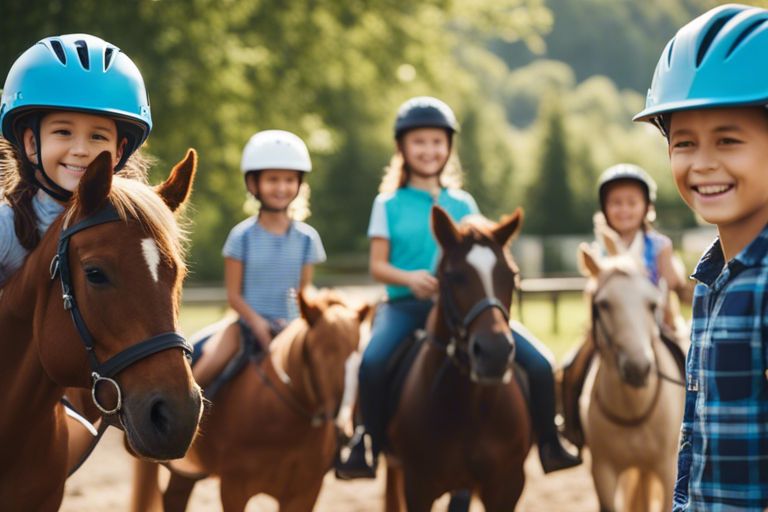
Building a Strong Foundation
Now that you’ve decided to start a youth riding program, it’s imperative to build a strong foundation to ensure its success. This chapter will guide you through creating a business plan, choosing a location, developing a budget, and securing funding for your program.
Tips for Creating a Business Plan
To create a successful youth riding program, it’s crucial to develop a business plan that outlines your goals, target market, services offered, pricing, and marketing strategies. This plan will serve as a roadmap for your program’s growth and sustainability. Research the market and competition, define your unique selling proposition, and set realistic financial projections to attract potential investors or sponsors. Knowing your numbers and having a clear plan in place will help you stay on track and achieve your long-term goals.
Factors to Consider When Choosing a Location
If you want your youth riding program to thrive, selecting the right location is crucial. Consider factors such as accessibility for participants and their families, safety measures in place, parking availability, and proximity to other amenities. These elements can greatly impact the success and sustainability of your program. After all, you want to provide a convenient and secure environment for your riders and their families.
If you have a specific discipline or type of riding you focus on, such as English or Western riding, you may also want to consider a location that aligns with that style. After all, having the right facilities and terrain can enhance the overall experience for your participants.
How to Develop a Budget and Secure Funding
Funding is a crucial aspect of starting and maintaining a youth riding program. To ensure financial stability, you need to develop a budget that includes all expenses, from facility rental and equipment purchase to instructor salaries and marketing costs. Knowing where your revenue will come from and having a contingency plan in place for unexpected expenses is imperative for the longevity of your program.
Foundation funding can come from various sources, including grants, sponsorships, donations, and program fees. Be proactive in seeking out potential partnerships and funding opportunities to support your program’s growth and sustainability. Foundation Note, a well-thought-out budget and secure funding are the cornerstones of a successful youth riding program.
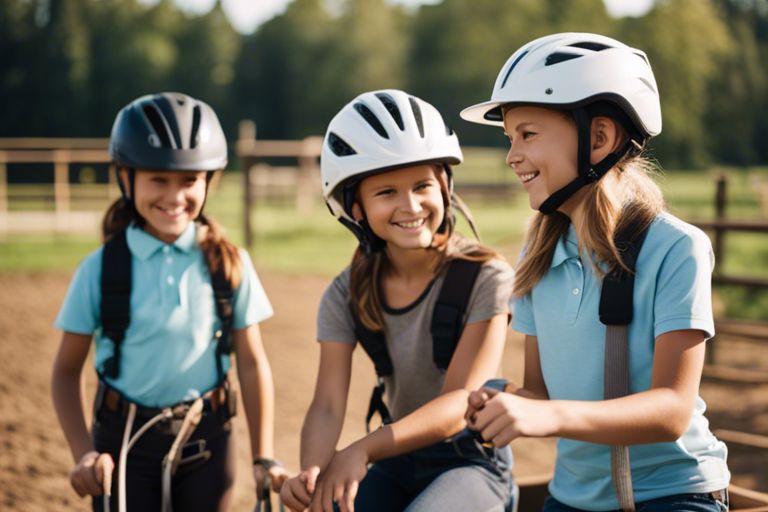
Recruiting and Training Instructors
Many experienced equestrians or horse enthusiasts may be interested in becoming instructors for your youth riding program.
Qualifications and Certifications for Instructors
If you are looking to hire instructors for your youth riding program, it is important to consider their qualifications and certifications. Look for instructors who have experience working with children, a solid understanding of horse behavior, and proper certifications such as those from the Certified Horsemanship Association (CHA) or the American Riding Instructors Association (ARIA).
How to Recruit and Hire Qualified Instructors
Instructors should be selected based on their experience, teaching style, and ability to communicate effectively with children. It is important to conduct interviews and even observe them teaching before making a final hiring decision. Consider reaching out to local equestrian communities, riding schools, or even posting job listings online to attract qualified candidates.
Instructors play a crucial role in the success of your youth riding program. They are responsible for not only teaching riding skills but also ensuring the safety and well-being of the children under their care. It is crucial to hire instructors who are not only skilled riders but also patient, attentive, and able to adapt their teaching methods to suit the needs of each individual student.
Tips for Training Instructors on Program Curriculum
It is important to provide your instructors with thorough training on your program curriculum to ensure consistency in teaching methods and lesson plans. Here are some tips for training your instructors:
- Hold regular training sessions to review lesson plans and teaching techniques.
- Provide opportunities for hands-on practice to help instructors become familiar with different teaching scenarios.
- Encourage feedback and open communication to address any questions or concerns that may arise.
Instructors who are well-trained and knowledgeable about the program curriculum will be better equipped to provide a positive and enriching experience for the youth riders in your program.
Developing a Curriculum and Lesson Plans
Factors to Consider When Creating a Curriculum
For a successful youth riding program, you need to develop a curriculum that is engaging, educational, and safe. When creating a curriculum, consider the following factors:
- Age and Skill Level: Tailor your curriculum to the age and skill level of the participants.
- Goals and Objectives: Define the goals and objectives of your program to guide curriculum development.
- Lesson Duration: Determine the ideal lesson duration based on the attention span of the participants.
Assume that by considering these factors, you can create a curriculum that meets the needs of your participants effectively.
How to Design Lesson Plans for Different Age Groups
For youth riding programs, designing lesson plans for different age groups is crucial to ensure that each session is engaging and developmentally appropriate. When designing lesson plans, consider the following:
- Age-Appropriate Activities: Incorporate age-appropriate activities that are both fun and challenging for the participants.
- Learning Styles: Cater to different learning styles by including visual, auditory, and kinesthetic elements in your lesson plans.
This will help you create lesson plans that keep participants excited and motivated while also promoting skill development and learning.
Tips for Incorporating Safety Protocols into Lesson Plans
Tips for incorporating safety protocols into your lesson plans:
- Helmet Use: Always require participants to wear helmets while riding.
- Supervision: Ensure there is adequate supervision during all activities.
After implementing these safety protocols in your lesson plans, you can create a secure and reliable environment for your participants.
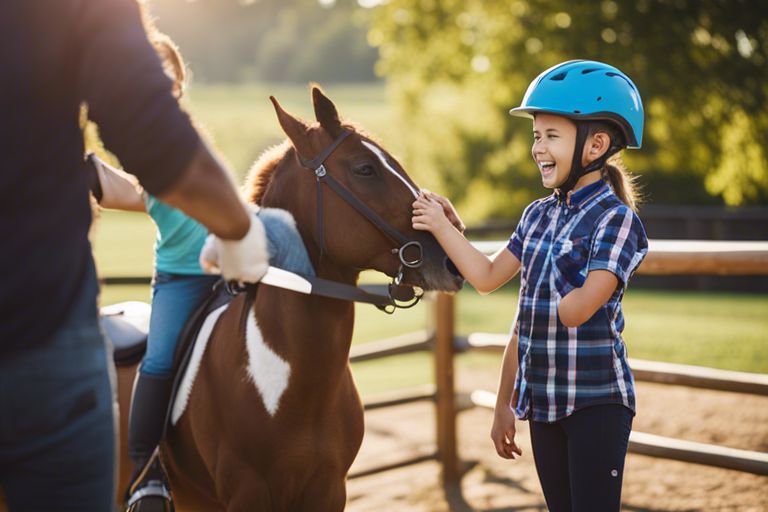
Acquiring Equipment and Facilities
How to Choose the Right Horses for the Program
To start a successful youth riding program, you need to carefully select the right horses. Consider the age and skill level of the riders in the program. Choose horses with calm temperaments and experience working with children. It’s crucial to have horses that are well-trained and suitable for beginners to ensure the safety and enjoyment of the riders.
Factors to Consider When Selecting Riding Equipment
Riding equipment is crucial for the safety and comfort of both the rider and the horse. Consider factors such as the size and fit of the saddles, bridles, and helmets. Ensure that the equipment is in good condition and appropriate for the riders’ age and skill level. Knowing the proper fit and maintenance of riding equipment is crucial for the well-being of the riders and horses.
Tips for Renting or Leasing Facilities
When starting a youth riding program, you may need to rent or lease facilities to provide a suitable environment for both the riders and horses. Acquiring a facility with ample space for riding arenas, stables, and storage is crucial. Consider the location and accessibility of the facilities to ensure convenience for participants and their families. Any necessary permits and insurance should also be in place before starting the program.
Marketing and Promoting the Program
How to Create a Marketing Strategy
To effectively market and promote your youth riding program, you need to develop a solid marketing strategy. Even before you launch the program, identify your target audience, understand their needs and preferences, and determine the best channels to reach them. Consider creating promotional materials such as flyers, brochures, and posters that highlight the benefits of your program and distribute them in places where your target audience is likely to see them.
Tips for Utilizing Social Media and Online Platforms
Having a strong online presence is crucial in today’s digital age. While considering social media platforms like Facebook, Instagram, and Twitter for promoting your youth riding program, remember to consistently engage with your audience by posting relevant and engaging content. Recognizing the power of visual content, share photos and videos of the program to attract more participants and followers.
- Use hashtags to increase visibility and reach a wider audience.
- Interact with your followers by responding to comments and messages promptly.
- Collaborate with social media influencers or local community pages to expand your reach.
- Make use of targeted advertising tools provided by social media platforms to reach your specific audience.
- Recognizing the importance of consistency, post regularly to keep your audience engaged and informed.
Factors to Consider When Partnering with Local Businesses
Understanding the value of partnerships with local businesses can greatly benefit your youth riding program. There’s a mutual opportunity for cross-promotion and support, which can help you reach a wider audience and establish credibility in the community. When approaching local businesses for partnerships, consider their target market, values, and reputation to ensure alignment with your program’s goals.
- Assume that local businesses will be interested in partnering if they see a clear benefit for their brand.
- Collaborate on joint promotions or events to attract more participants and customers.
- Offer sponsorship opportunities for local businesses to support your program financially in exchange for exposure.
- Build strong relationships with local businesses by communicating regularly and delivering on any commitments made.
- Assume that local businesses will appreciate the chance to give back to the community and support youth activities.
Conclusion
To wrap up, starting a youth riding program can be a rewarding and fulfilling experience. By following the steps outlined in this guide, you can create a safe and enjoyable environment for young riders to develop their skills and passion for horseback riding. Remember to prioritize safety, provide proper equipment and instruction, and foster a supportive and encouraging atmosphere for your participants.
As you initiate on this journey, keep in mind that patience, dedication, and an open mind will be key to the success of your youth riding program. Watching young riders grow in confidence and ability under your guidance can be incredibly gratifying. By laying a strong foundation and cultivating a love for horsemanship, you have the opportunity to positively impact the lives of the next generation of equestrians. Best of luck as you start your youth riding program!
Q: What are the benefits of starting a youth riding program?
A: Starting a youth riding program can provide numerous benefits such as promoting physical activity, teaching responsibility and teamwork, developing confidence and social skills, and fostering a love for animals and nature.
Q: What are the basic requirements for starting a youth riding program?
A: The basic requirements for starting a youth riding program include having qualified instructors, suitable horses and equipment, a safe riding area, liability insurance, proper permits and licenses, and a structured curriculum for teaching riding skills.
Q: How can I attract participants to my youth riding program?
A: You can attract participants to your youth riding program by offering promotional events, hosting open houses, partnering with schools or community organizations, utilizing social media and online marketing, providing informative and engaging content, and offering discounts or scholarships.
What safety precautions should be followed in a youth riding program?
A: Safety is paramount in a youth riding program. Some key safety precautions to follow include providing helmets for all riders, conducting regular equipment checks, matching riders with suitable horses based on their skill level, ensuring proper supervision at all times, teaching proper riding techniques, and having emergency procedures in place.
How can I measure the success of my youth riding program?
A: You can measure the success of your youth riding program by tracking participation numbers, collecting feedback from participants and their parents, monitoring skill progression and rider development, seeking testimonials and reviews, and setting goals and objectives to evaluate the program’s impact and effectiveness over time.
